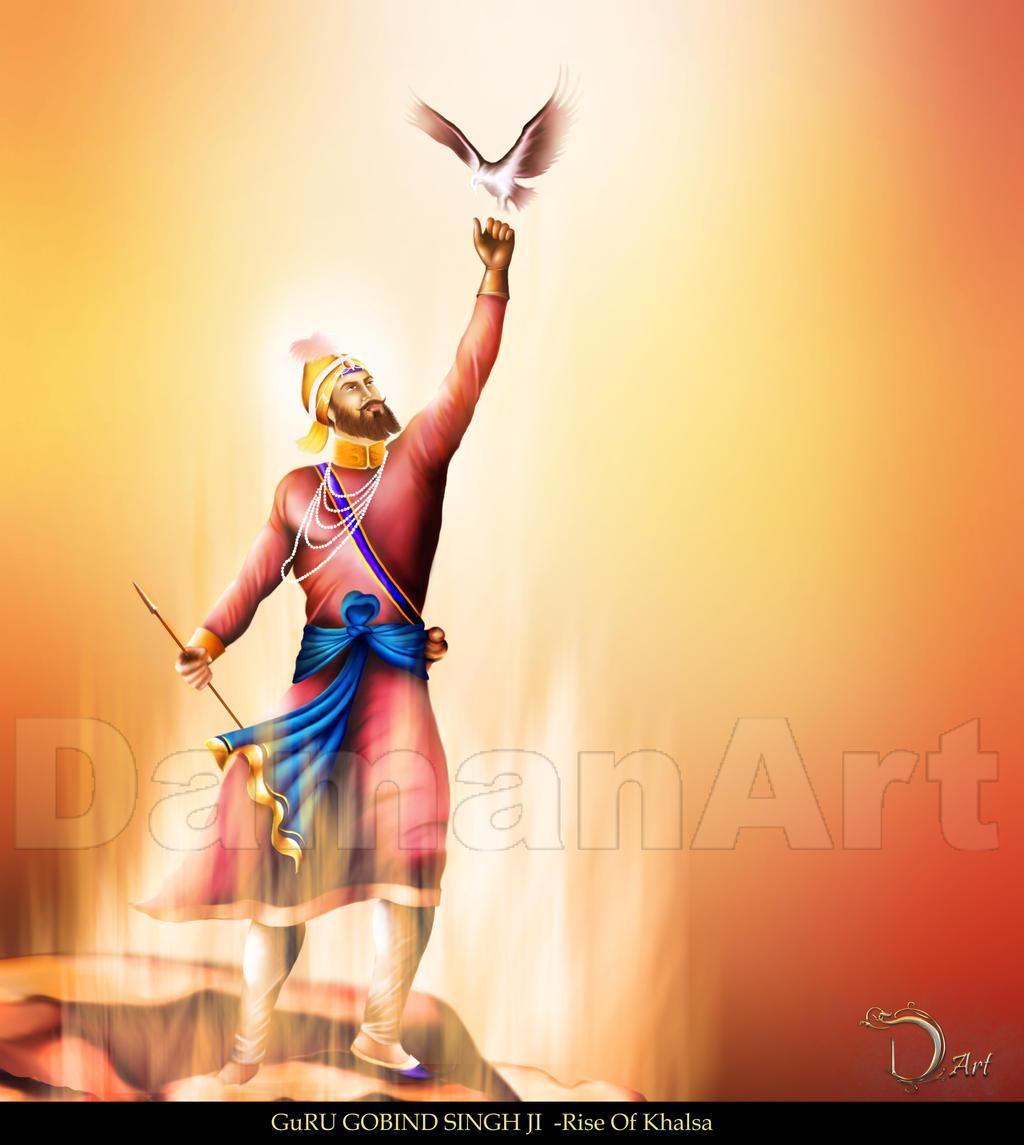Battle of Bhangani Details:
Bichitra Natak, is a narration (Bani) and autobiography of Guru Gobind Singh which contains detailed description of the battle. Guru Gobind Singh resided at Anandpur Sahib, which was located in the territory of Raja Bhim Chand of Bilaspur (Kahlur).
By the 1680s, the Guru's influence and power had increased greatly. His devotees came from distant places and brought him valuable gifts. A devotee called Duni Chand visited Anandpur in 1681, and presented him a Shamiana (a royal canopy or tent) embroidered in gold and silver, and was studded with pearls. Ratan Rai, the son of Raja Ram Rai of Assam, visited Anandpur with his mother and several ministers, and presented several gifts to the Guru, including an elephant called Prasadi (or Parsadi).
In mid-1680s, Guru Gobind Singh ordered the construction of a war drum (nagara) to enthuse his army. The job of constructing the drum was entrusted to the Guru's Diwan, Nand Chand, and the drum was named Ranjit Nagara. The use of such a war drum was limited to the chieftains, within their territory. Its use by the Guru was considered a hostile act by Raja Bhim Chand. On his Prime Minister's advice, the Raja arranged a meeting with the Guru, and visited his court in Anandpur. There, his eyes fell on the valuable gifts presented to the Guru by the devotees.
Bichitra Natak, is a narration (Bani) and autobiography of Guru Gobind Singh which contains detailed description of the battle. Guru Gobind Singh resided at Anandpur Sahib, which was located in the territory of Raja Bhim Chand of Bilaspur (Kahlur).
By the 1680s, the Guru's influence and power had increased greatly. His devotees came from distant places and brought him valuable gifts. A devotee called Duni Chand visited Anandpur in 1681, and presented him a Shamiana (a royal canopy or tent) embroidered in gold and silver, and was studded with pearls. Ratan Rai, the son of Raja Ram Rai of Assam, visited Anandpur with his mother and several ministers, and presented several gifts to the Guru, including an elephant called Prasadi (or Parsadi).
In mid-1680s, Guru Gobind Singh ordered the construction of a war drum (nagara) to enthuse his army. The job of constructing the drum was entrusted to the Guru's Diwan, Nand Chand, and the drum was named Ranjit Nagara. The use of such a war drum was limited to the chieftains, within their territory. Its use by the Guru was considered a hostile act by Raja Bhim Chand. On his Prime Minister's advice, the Raja arranged a meeting with the Guru, and visited his court in Anandpur. There, his eyes fell on the valuable gifts presented to the Guru by the devotees.
Battle of Bhangani Details:
Bichitra Natak, is a narration (Bani) and autobiography of Guru Gobind Singh which contains detailed description of the battle. Guru Gobind Singh resided at Anandpur Sahib, which was located in the territory of Raja Bhim Chand of Bilaspur (Kahlur).
By the 1680s, the Guru's influence and power had increased greatly. His devotees came from distant places and brought him valuable gifts. A devotee called Duni Chand visited Anandpur in 1681, and presented him a Shamiana (a royal canopy or tent) embroidered in gold and silver, and was studded with pearls. Ratan Rai, the son of Raja Ram Rai of Assam, visited Anandpur with his mother and several ministers, and presented several gifts to the Guru, including an elephant called Prasadi (or Parsadi).
In mid-1680s, Guru Gobind Singh ordered the construction of a war drum (nagara) to enthuse his army. The job of constructing the drum was entrusted to the Guru's Diwan, Nand Chand, and the drum was named Ranjit Nagara. The use of such a war drum was limited to the chieftains, within their territory. Its use by the Guru was considered a hostile act by Raja Bhim Chand. On his Prime Minister's advice, the Raja arranged a meeting with the Guru, and visited his court in Anandpur. There, his eyes fell on the valuable gifts presented to the Guru by the devotees.
0 Comments
0 Shares
0 Reviews




